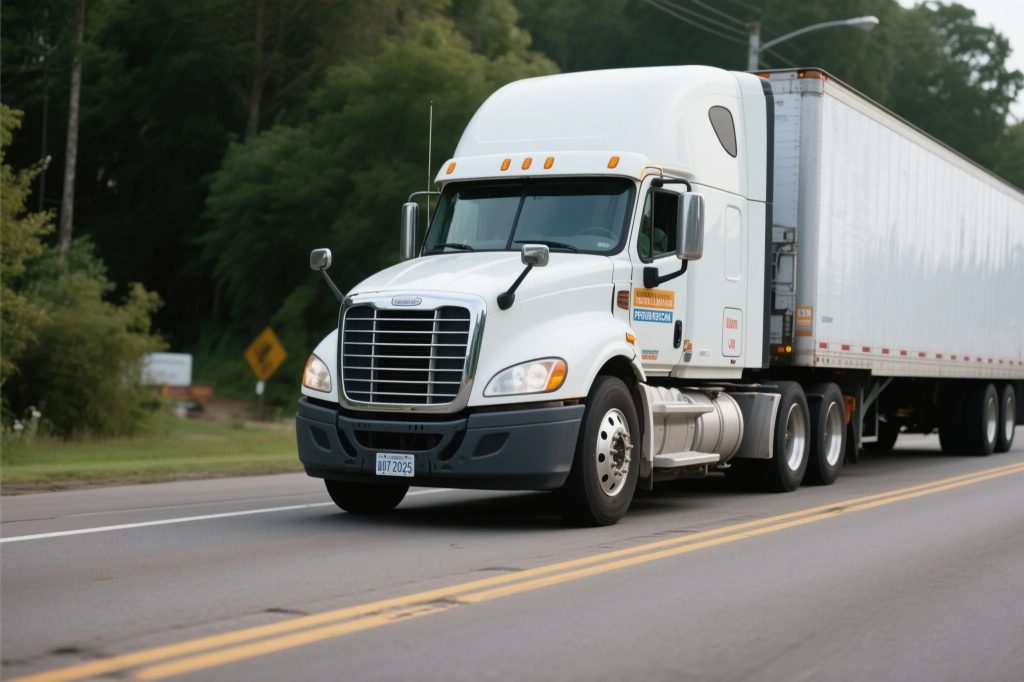The Perfect Storm Driving Up Trucking Insurance Costs
The trucking industry is facing unprecedented increases in trucking insurance premiums, with many carriers seeing 20-40% rate hikes in 2025. Several converging factors have created this challenging environment. Nuclear verdicts in accident lawsuits now routinely exceed $10 million, with juries showing little sympathy for large transportation companies. Medical costs for accident injuries have skyrocketed, with simple whiplash claims now often surpassing $100,000 in treatment expenses. Perhaps most concerning is the dramatic rise in catastrophic accidents involving multiple vehicles, where total claims can easily reach eight figures. These massive payouts are forcing insurers to recalibrate their risk models and increase premiums across the board to maintain solvency.
Compounding these legal and medical cost issues are troubling trends in the commercial auto policy market itself. Many insurers have exited the trucking sector entirely after suffering consecutive years of underwriting losses. Those remaining have tightened underwriting standards, requiring more stringent safety protocols and driver qualifications. The insurance capacity crunch means fewer carriers competing for business, allowing those remaining to push through substantial rate increases. Fleet operators now face a brutal reality – they must either absorb these crushing insurance costs or find innovative ways to reduce their risk profiles. Those who take proactive measures can still find reasonable premiums, but the days of cheap trucking insurance are gone for good.
How Nuclear Verdicts Are Reshaping Coverage
The explosion of multi-million dollar jury awards has fundamentally transformed high-risk transportation insurance underwriting. What insurers once considered “worst case scenario” claims have become frighteningly common. Recent cases include a $90 million verdict against a tanker truck company and a $42 million judgment in a rear-end collision case. These staggering amounts reflect changing jury attitudes where trucking companies are viewed as deep-pocketed corporations rather than essential service providers. Plaintiffs’ attorneys have become adept at portraying minor safety lapses as evidence of systemic corporate negligence, convincing juries to award punitive damages that dwarf actual medical costs.
This litigation environment has forced motor carrier coverage providers to completely rethink their approach. Many now require policyholders to carry minimum $5 million liability limits, with $10 million becoming standard for larger fleets. Insurers are scrutinizing driver hiring and training practices more closely than ever before. Some refuse to cover carriers that don’t implement specific safety technologies like automatic emergency braking and 24/7 driver monitoring systems. The underwriting process has become extraordinarily detailed, with insurers requesting years of safety records, driver logs, and maintenance reports before quoting. Carriers that can demonstrate excellent safety cultures through documented programs and consistent practices can still find competitive rates, but the burden of proof has never been higher.
Technology Solutions to Lower Premiums
Forward-thinking fleets are leveraging advanced safety technologies to combat rising trucking insurance costs. Telematics systems have evolved far beyond simple GPS tracking to become comprehensive risk management platforms. Modern systems combine real-time driver coaching, predictive analytics, and automated safety interventions. The most effective solutions monitor not just vehicle location but driver attention, following distance, hard braking frequency, and even eye movement to detect fatigue. These systems provide two powerful benefits: preventing accidents before they occur and creating documented evidence of safety compliance that insurers reward with substantial discounts.
The impact of technology on fleet insurance solutions pricing can be dramatic. Carriers implementing full-suite telematics with active driver coaching often see 15-25% premium reductions. Video-based systems that document accident circumstances help defeat fraudulent claims and disprove exaggerated injury allegations. Some insurers now offer “pay-as-you-drive” programs where premiums adjust monthly based on actual measured risk factors like hard braking events and unsafe driving hours. The most sophisticated fleets combine multiple technologies – electronic logging devices, dash cams, and AI-powered predictive analytics – to create comprehensive risk profiles that convince underwriters they represent better-than-average risks deserving of preferred rates.
Creative Policy Structures for Cost Control
Traditional commercial auto policy structures are giving way to more flexible arrangements that reward safety-conscious carriers. Many insurers now offer layered programs where fleets can choose higher deductibles on physical damage coverage while maintaining robust liability protection. This approach makes particular sense for carriers with strong safety records who want to “self-insure” the more predictable, smaller claims. Another emerging option is captive insurance programs where groups of similar-sized carriers pool their risks to gain more control over premiums and claims handling. While requiring substantial upfront capital, these programs can provide long-term stability unavailable in the volatile standard insurance market.
For larger fleets, motor carrier coverage is increasingly moving toward retrospective rating plans where final premiums adjust based on actual loss experience. These plans provide immediate premium relief with the understanding that costs may increase if claims exceed projections. Some carriers are exploring parametric insurance products that pay out based on specific triggers (like verified accident events) rather than traditional claims processes, reducing disputes and speeding settlements. The most innovative programs incorporate third-party safety audits and continuous monitoring services as integral policy components, creating alignment between insurer and insured in preventing losses rather than just paying for them after they occur.

Driver Risk Management Strategies
The single most significant factor impacting high-risk transportation insurance premiums is driver quality and performance. Insurers now scrutinize hiring practices, training programs, and retention rates as closely as they review loss histories. Carriers that can demonstrate rigorous hiring standards – including thorough background checks, verified employment histories, and pre-employment drug testing – often qualify for significant rate advantages. Ongoing driver training has become equally important, with insurers increasingly requiring documented quarterly safety education rather than just annual refreshers. The most progressive fleets now use virtual reality simulations to train drivers in hazard recognition and accident avoidance without real-world risks.
Effective fleet insurance solutions now incorporate sophisticated driver scoring systems that go beyond basic compliance metrics. These systems analyze hundreds of data points from telematics, cameras, and performance records to identify which drivers represent the greatest risks. The most successful programs couple this data analysis with positive reinforcement – rewarding safe drivers with bonuses and additional responsibilities rather than just punishing poor performers. Some insurers now offer substantial discounts for carriers that implement formal driver mentorship programs pairing experienced professionals with newer hires. These human-focused approaches complement technological solutions to create comprehensive safety cultures that insurers view favorably during underwriting.
Maintenance and Vehicle Spec Strategies
Proper vehicle maintenance has always been important, but in today’s trucking insurance climate it’s become a make-or-break cost factor. Insurers now routinely request maintenance records and often conduct surprise inspections of fleet vehicles. The most cost-effective carriers implement predictive maintenance programs using IoT sensors that identify potential mechanical issues before they cause breakdowns or accidents. These systems monitor everything from brake wear to tire pressure to engine performance, creating digital paper trails that demonstrate commitment to vehicle safety. Many insurers offer 5-10% premium discounts for fleets using these advanced maintenance technologies.
Vehicle specification also plays an underappreciated role in commercial auto policy pricing. Trucks equipped with the latest safety features – automatic emergency braking, lane departure warnings, adaptive cruise control – often qualify for substantial rate reductions. Some insurers refuse to cover older trucks lacking these technologies entirely. Forward-looking fleets are working with manufacturers to spec vehicles specifically for insurance advantages, sometimes accepting slightly higher purchase prices that are quickly offset by multi-year premium savings. The most innovative operators are even testing autonomous safety systems that can take control in imminent collision situations, though insurers are still determining how to properly underwrite these emerging technologies.
Alternative Risk Financing Options
With traditional high-risk transportation insurance becoming prohibitively expensive for many carriers, alternative risk transfer mechanisms are gaining popularity. Large fleets are increasingly turning to group captives – essentially forming their own insurance companies with other similar-sized operators. These arrangements allow members to retain underwriting profits and gain more control over claims handling while spreading risk across the group. Smaller carriers are exploring rent-a-captive options where they participate in existing programs without the capital requirements of starting their own. While these options require substantial risk management sophistication, they can provide long-term cost stability unavailable in the traditional market.
Another innovative approach to motor carrier coverage involves parametric or index-based policies that pay out based on objective data rather than traditional loss adjustment. For example, a policy might automatically trigger payment if a truck is involved in a verifiable collision exceeding a specified impact speed. These products remove much of the subjectivity from claims processing while providing faster payouts. Some fleets are layering traditional insurance with parametric products to create customized coverage stacks that match their specific risk tolerances. While still emerging in the trucking sector, these alternative products represent promising options for carriers struggling with conventional insurance costs.
Negotiating Strategies in a Hard Market
Effective negotiation has become essential for securing reasonable fleet insurance solutions in today’s challenging environment. The most successful fleets approach renewals with comprehensive underwriting packages that highlight their safety investments and positive loss trends. These packages typically include three years of loss runs, detailed safety program descriptions, driver training records, and technology implementation reports. Savvy negotiators emphasize how their operations differ from industry averages that are driving rate increases. Some carriers even create video presentations showing their safety technologies in action to help underwriters visualize their risk management investments.
Timing has also become crucial in trucking insurance negotiations. Starting renewal discussions 90-120 days before policy expiration provides time to gather competitive bids and negotiate terms. Many fleets now work with specialized trucking insurance brokers who maintain relationships with multiple markets and understand which insurers are most active at any given time. These brokers can often structure creative programs like loss corridor agreements where the fleet shares in both favorable and unfavorable loss experiences. Perhaps most importantly, successful negotiators maintain long-term relationships with insurers rather than jumping between carriers each year, as consistent coverage history is increasingly valued in underwriting.
Future Trends in Trucking Insurance
The trucking insurance market shows no signs of softening in the near future, but several emerging trends could help stabilize costs. Widespread adoption of advanced driver assistance systems (ADAS) is expected to significantly reduce accident frequency over time, though insurers remain cautious until long-term data proves their effectiveness. The expansion of electronic logging device (ELD) mandates has improved hours-of-service compliance, reducing fatigue-related accidents. Perhaps most promising is the development of more sophisticated risk scoring models that better differentiate between high-quality and marginal operators, allowing safer fleets to escape the “high-risk” classification that drives excessive premiums.
The evolution of commercial auto policy products will likely accelerate in response to these challenges. Usage-based insurance that prices coverage based on actual miles driven and routes traveled is gaining traction. More insurers may offer premium financing options to help fleets manage cash flow while maintaining adequate coverage. The most progressive carriers are working directly with insurers to develop customized safety programs that address their specific risk profiles in exchange for preferred pricing. While the road ahead remains challenging, fleets that proactively embrace safety innovation and alternative risk strategies can still find viable paths to affordable, comprehensive coverage in 2025’s difficult insurance market.





